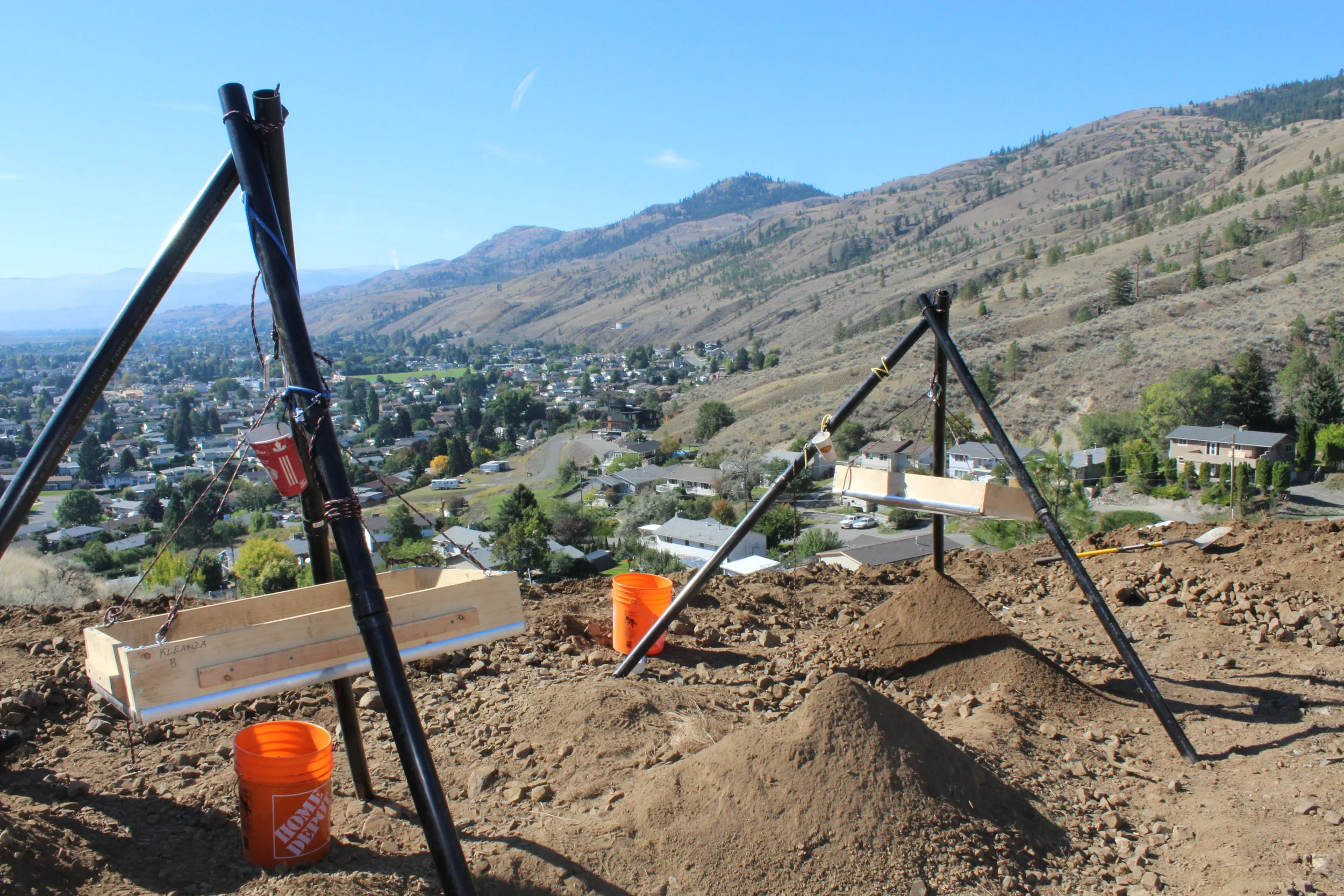The 2017 British Columbia Archaeology Forum is being held in Kamloops on Saturday, November 18th. This is an annual event that allows archaeologists, academics, First Nations, government representatives, and the interested public to come together and discuss current archaeological issues and research. The Forum is hosted by the Secwepemc Museum and Heritage Park and will be held at Moccasin Square Gardens at Tk’emlups te Secwepemc (Kamloops Indian Band).
In anticipation of this event, I present the following BC Archaeology Primer.
Archaeology is the study of past human cultures through the analysis of the physical remains of those cultures. But what do archaeologists in BC do? And why?
1. An archaeological site is any location where these material cultural remains are identified. Archaeological sites in BC range in size and complexity from a single discarded tool to the remains of entire villages.
2. Archaeological sites are more common than you might think: Almost 50,000 have been formally recorded in British Columbia. These sites represent at least 14,000 years of First Nations history.
3. The Kamloops area has been a focus of human habitation and activity for millennia. There are more than 250 recorded archaeological sites within ten kilometers of the downtown core of Kamloops—and many more in the region.
4. Archaeology involves a variety of approaches and techniques for investigating the past. Many of these are borrowed from related fields, including anthropology, history, geology and ecology.
5. Because First Nations people have lived here for so much longer than the rest of us, most archaeological research in BC is focused on First Nations cultural history. But archaeology is also employed to study the non-aboriginal history of BC. For example, archaeological research has focused on gold rush sites, World War II Japanese internment camps, and early fish canneries.
6. Archaeological sites in BC are legally protected by the Heritage Conservation Act. It is overseen by the Archaeology Branch of the Ministry of Forests, Lands, Natural Resource Operations and Rural Development. The Act legally protects archaeological sites from alterations of any kind. The provisions of the Act apply to both public and private land, and it is binding on government.
7. The Heritage Conservation Act automatically protects most archaeological sites if they are known or can be inferred to pre-date AD 1846, or if they contain human remains or aboriginal rock art of historical or archaeological value, regardless of age. The Act also protects shipwrecks or airplane wrecks that are two or more years old. The Act can also protect archaeological sites through formal agreement with First Nations, or by their formal designation as Provincial heritage sites.
8. The Archaeology Branch maintains an inventory of recorded archaeological sites and issues and oversees a permitting process. Archaeologists must obtain permits to conduct their fieldwork. These permits define the goals and methods of our archaeological studies, and confirm which repository will ultimately store and curate the artifacts and samples we collect (No, we archaeologists don’t get to keep the artifacts!). The Archaeology Branch provide a variety of information and guidance for developers and for the public on their website: for.gov.bc.ca/archaeology/index.htm.
9. There are archaeologists affiliated with most universities and colleges in BC. However, most archaeological research in BC is conducted not by academic archaeologists but by archaeologists employed in the field of Cultural Resource Management (CRM). CRM archaeologists conduct applied research focussed on avoiding or mitigating the impacts of developments on archaeological sites.
10. Archaeological and heritage sites are commonly addressed in provincial and federal Environmental Assessments. The management of archaeological concerns is built into the planning processes in the forestry and mining industries and in the transportation sector.
11. Interested members of the public are invited to join the Archaeological Society of British Columbia. The ASBC has been educating British Columbians about archaeology since 1966! Members receive The Midden, an illustrated journal that has long been a cornerstone of BC archaeology. The ASBC’s website is asbc.bc.ca/
12. In Kamloops, the Secwepemc Museum and Heritage Park offers a variety of displays focussed on Secwepemc culture and history, including extensive archaeological displays, and several recreated traditional dwellings and food processing features. Group interpretive tours are available. More information is available at tkemlups.ca/museum-heritage-park/.
13. The Kamloops Museum and Archives documents many aspects of the cultural history of our town and our region, including Secwepemc history and local archaeology. Their website is kamloops.ca/museum/index.shtml.
14. Archaeologists in British Columbia have their own professional association, the BC Association of Professional Archaeologists. It currently has about 230 members. CRM archaeologists who are Professional Members are entitled to call themselves Registered Professional Consulting Archaeologists. The Association’s website is bcapa.ca/.

